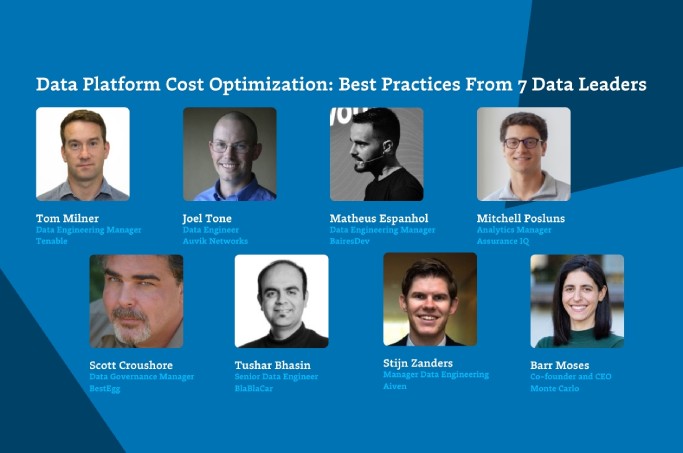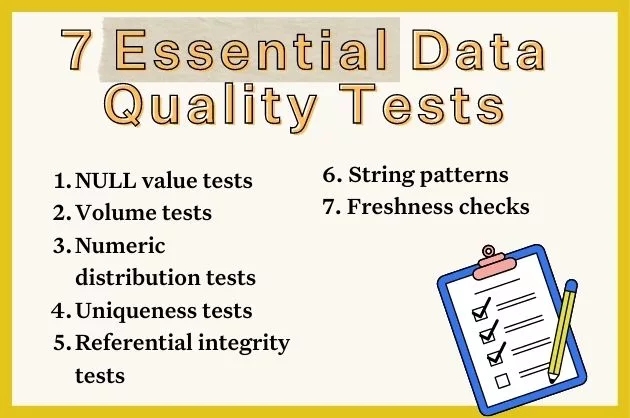7 Essential Data Cleaning Best Practices

Spring cleaning is upon us. And if you happen to be reading this article in a season other than spring, don’t worry: spring cleaning is acceptable (and encouraged, in fact) year-round.
Nothing quite beats the feeling of a clean household or a clean inbox. But, for data engineers, there’s something else that comes pretty close to the top of that list: clean data.
Data cleaning is an essential step to ensure your data is safe from the adage “garbage in, garbage out.” Why? Because effective data cleaning best practices fix and remove incorrect, inaccurate, corrupted, duplicate, or incomplete data in your dataset; data cleaning removes the garbage before it enters your pipelines.
If messy, incorrect data is flowing through your pipelines, data teams not only run the risk of broken pipelines – downstream consumers run the risk of broken dashboards, inaccurate metrics, and unhappy business stakeholders.
In this article, we’ll outline seven data cleaning best practices so your pipelines will be spick and span and ready for any season (or stakeholder).
Table of Contents
1. Define Clear Data Quality Standards
First and foremost, it’s important to establish specific data quality criteria to begin your data cleaning process.
Typically, clean data should be measured by the following characteristics:
- Accuracy
- Timeliness
- Freshness
- Completeness
- Consistency
- Validity
- Uniformity
- Integrity
If you have multiple datasets running through multiple pipelines – and chances are, you probably do – it can be helpful to categorize your data. Most organizations can bucket their data usage into three main categories:
- Analytical data: Data used primarily for decision making or evaluating the effectiveness of different business tactics via a BI dashboard
- Operational data: Typically streaming or microbatched data used directly in support of business operations in near-real time. Some use cases here could be accommodating customers as part of a support/service motion or an ecommerce machine learning algorithm that recommends “other products you might like”
- Customer-facing data: Data that’s surfaced within and adds value to the product offering or data that IS the product, like a reporting suite within a digital advertising platform
For each of these data categories, organizations may have dedicated domains or even entire teams responsible for the movement of this data.
2. Implement Routine Data Audits
Build a data cleaning cadence into your data teams’ schedule. Routine data quality checks will not only help to reduce the risk of discrepancies in your data, but it will also help to fortify a culture of high-quality data throughout your organization. This will also prevent your team from having to clean the data as soon as they encounter a dataset.
Depending on the needs of your company and how much data you work with, it’s best to schedule your organization’s routine data cleaning at least once a month, once a quarter, once every six months, or annually.
3. Utilize Automated Data Cleaning Tools
One of the easiest ways to implement routine data cleaning into your organization is to automate. Automated data cleaning tools can save you time, especially if your team is just getting started with implementing data cleaning best practices.
There are many tools that can help your team automate the cleaning process, including:
- OpenRefine
- Trifacta Wrangler
- Winpure Clean & Match
- TIBCO
- Melissa Clean Suite
- IBM Infosphere Quality Stage
- Tableau Prep
Depending on the size of your database and your use case, some of these tools may work better for your organization than others. Once you evaluate the right automated data cleaning tool for your data team, it will be extremely helpful in building the routine.
4. Prioritize Data Accuracy and Consistency
If your datasets are full of nulls, repeats, inaccuracies, or anomalies, then your dataset is less of a set of helpful data and more of just an errant set of information.
That’s why maintaining accurate, consistent data is so essential for a data organization. It builds trust in the data – and as a result, it builds trust in the data team responsible for the data as well. Routine data cleaning helps organizations maintain the high quality of their data.
If the data is erroneous, then it runs the risk of causing data downtime later downstream, which can break the trust of stakeholders and cause financial, legal, and additional consequences. Many data organizations leverage a data observability tool to constantly monitor their pipelines for anomalies, so they can automatically pinpoint issues and improve their time to resolution before the issue snowballs.
5. Develop a Comprehensive Data Cleaning Plan
Create a data cleaning plan that’s comprehensive, and if you’re not using an automated data cleaning tool, be sure to assign appropriate stakeholders across the data team to be responsible for certain stages of the plan.
A comprehensive data cleaning plan should include the following steps:
- Get rid of unwanted observations
- Unify the data structure
- Standardize your data
- Remove unwanted outliers
- Fix cross-set data errors
- Resolve type conversion and syntax errors
- Deal with missing data
- Validate your data
By checking off each of these steps in the data cleaning plan, your data team should be able to remove and fix any data anomalies, and build confidence in the quality of your data. If all of these steps have been successfully completed, then you have successfully executed a comprehensive data cleaning plan.
6. Train Your Team on Data Cleaning Best Practices
Executing the above steps is important, but it will only be done well if your team understands the data cleaning best practices.
Before starting the data cleaning process, educate your data team on the right techniques for cleaning a dataset. Data cleaning best practices might include:
- Standardizing data entry
- Correcting data at the source
- Leveraging the proper data procedures
- Creating a feedback loop to verify that the data has been cleaned
7. Continuously Monitor and Refine Processes
Data cleaning isn’t a one-and-done practice. Your data team should monitor and refine your data cleaning process on an ongoing basis.
As your company scales, your product evolves, and your customer base grows, your database will grow and change. As a result, your data cleaning best practices will need to change accordingly in order to ensure you’re maintaining accurate, consistent, and high-quality data at every stage.
Elevate Data Cleaning Best Practices with Monte Carlo
While cleaning your data may not be the most exciting time of a data engineer’s day, it is absolutely crucial to healthy data products and pipelines. Thankfully, there are many automated solutions out there that can help ease the process by either setting up a routine or managing ongoing data monitoring.
Data observability tools are the best way to maintain clean, accurate, and consistent data pipelines. An effective data observability solution, like Monte Carlo, automatically monitors your data pipelines from end-to-end to pinpoint issues in volume, schema, and freshness as soon as they occur.
Data teams can then leverage the data cleaning practices they’ve built to pinpoint the root cause, triage, and resolve the issue right away. It’s like a data cleaning cheat code for data engineers.
To learn more about how data observability can help your team maintain clean, high-quality data, speak to our team.
Our promise: we will show you the product.
 Product demo.
Product demo.  What is data observability?
What is data observability?  What is a data mesh--and how not to mesh it up
What is a data mesh--and how not to mesh it up  The ULTIMATE Guide To Data Lineage
The ULTIMATE Guide To Data Lineage 





